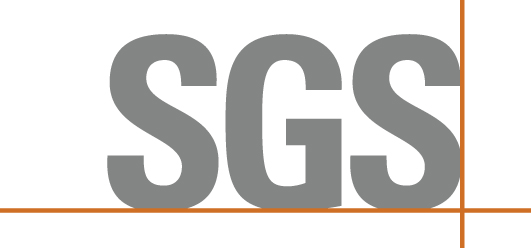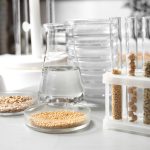SGS Crop Science News: June 2024
• PSNT Sampling for Nitrogen Management
• Seasonal Water Testing for Fertigation and Irrigation
• Tissue Analysis to Monitor Crop Nutrition
• Forage Packages Designed for Hay Quality Determination
PRE-SIDEDRESS NITRATE ANALYSIS FOR NITROGEN MANAGEMENT
Most areas that grow corn had a relatively mild winter and early spring, which can result in higher available nitrogen in soils than in typical weather years. For those that apply a portion of N pre-plant or as a starter and are intending on adding additional N to the crop in-season, a PSNT sample will provide information to fine-tune nitrogen rates. Knowing how much N is present helps to determine how much additional N is required. It is best to collect soil to a 12 inch depth for PSNT samples, due to the mobility of nitrate-N, and to stay between the corn rows so that none of the starter N is collected in the sample.
PSNT samples should be kept cool and submitted to our Guelph laboratory promptly.
Where fields have variability of texture and/or topography, independent samples may offer opportunities for variable rate application. The dark coloured and high organic matter sections of the field will be capable of mineralizing nitrogen in greater quantities than the light coloured hilltops. Testing each area separately is recommended.
WATER TESTING FOR CONTROLLED ENVIRONMENT FERTIGATION OR FIELD IRRIGATION
As the summer months approach, rising temperatures also affect the water temperature in wells and ponds. As the temperature increases, so does the solubility of certain compounds that can affect your current recipe’s balance. We suggest testing the source water regularly to reveal whether additional treatment is necessary, such as acidifying the water to lower pH and bicarbonate levels. Whether in the field, greenhouse or vertical farm knowing what your water contains will help you understand what modifications need to be made to optimize crop production. At SGS, we work with farms of all types and sizes by providing this information quickly and concisely. We are here to assist you with finding the testing regime that is right for you. Contact us today to learn how to streamline your testing, saving you time and money.
PLANT TISSUE ANALYSIS TO MONITOR CROP NUTRITION
To elevate profitability, consider the opportunities of plant tissue analysis. This management tool monitors crop nutrient uptake and clearly measures nutrient imbalances. Soil testing reveals nutrient levels, but does not indicate how well those nutrients will be utilized in the current growing year and environmental conditions. Early season testing of plant tissue may reveal deficiencies that can be corrected before yield is lost. For seedlings, collect all above ground growth and be sure to keep any soil from contaminating the sample. When sampling crops mid-season, the rule of thumb is to gather the newest fully-developed leaf from several plants. Check out our website for guidelines specific to the crops you are growing. Submit no less than 200 grams of fresh leaves and package loosely in paper bags. Our responsive client services staff will coordinate sample bags for your use, so reach out to us now!
FORAGE PACKAGES DESIGNED FOR HAY QUALITY DETERMINATION
Do you know the feed value of your hay and what is needed for top animal performance? Both wet chemistry and NIR packages are available for forages, total mixed rations, corn, corncob meal, and high moisture corn. NIR testing offers faster results and lower cost as a single instrument is used to provide the predictions. For less traditional feed types a wet chemistry package is required. Let our team help you select the ideal package for your agribusiness. We not only provide the analytical result, but we also provide specific energy calculations based on livestock type. Our expertise can be counted on.





